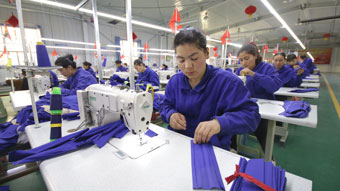Political violence in China
Part of the cause is the lack of political representation of the Muslim minority Uyghurs
Scholars have long debated the motivations that drive terrorism and political violence around the globe. While arguments continue to rage on the fine details, there is general consensus that unrest is fueled by (1) a lack of effective political representation, combined with (2) the absence of nonviolent outlets for grievances, such as the opportunity to congregate in protest.
While China’s scale always sets it apart from other countries, many of the established elements that drive political violence elsewhere are at play in Xinjiang—an autonomous territory in northwest China that is home to many ethnic minority groups, including the Uyghur people.

As an oppressed minority living under a strong authoritarian regime, Uyghurs clearly lack political representation. Even within the Uyghurs’ so-called autonomous region, Han Chinese occupy 64 percent of the senior political positions available, according to a 2017 report by Uyghur Human Rights Project.
Uyghurs, on the other hand, hold just 21 percent of the positions.
Even within the Uyghurs’ so-called autonomous region, they hold just 21 percent of senior political positions
The underrepresentation of Uyghurs in the military and Communist Party systems is even more pronounced. In 2016, there were 31 leadership positions in the two regional military districts, the PLA Xinjiang Military District and the Southern Xinjiang Military District. Uyghurs occupied just two of those posts. Meanwhile, there was only 1 Uyghur among the 110 Party secretary positions at the prefecture and county levels in Xinjiang. Quality data for recent years are lacking, but these trends have almost certainly worsened.

Uyghurs in China fare little better when it comes to alternative outlets for political discontent. For example, Cao and coauthors find that within Xinjiang, counties with a higher mosque density have historically experienced significantly fewer violent incidents in a given year.
They attribute this effect to the conflict-dampening effect of local religious institutions and their function as an information bridge that allows local people to channel their grievances.
Mosques, however, are themselves under fire by the Chinese government as part of its effort to destroy the Islamic identity of Uyghur and other Muslim communities in Xinjiang. Sixteen thousand mosques in Xinjiang have been either destroyed or damaged by CCP efforts to erase and redefine the region’s cultural traditions, according to satellite imagery of the region. That represents 65 percent of all Xinjiang mosques, with most of the damage occurring since 2017.
Mosques are under fire by the Chinese government as part of its effort to destroy the Islamic identity of Uyghur and other Muslim communities
Only prominent mosques near major tourist destinations—for example, in Kashgar—have largely avoided destruction, but religious services there are carefully curtailed and the buildings have been largely recast as tourist attractions. Thus, even this modest outlet for expression is now essentially nonexistent in the region.
This notion that unrest and grievance can arise from a lack of political outlet is broadly referred to as the “political access” school. There is also a parallel “strategic school” of thought that emphasizes the extent to which the many tools of authoritarianism effectively suppress violence. Strict restrictions on assembly and movement, seamless surveillance systems, and harsh punishments increase the risk and cost of violence. In addition, media censorship and information control can deprive militants of the “oxygen of publicity” they rely on to deliver their message. China offers a case in point for both schools of thought.
The situation in Xinjiang also closely mirrors the hypothesized relationship between economic prosperity and political violence. While cross-national studies find a mixed relationship between violence and poverty, they consistently find that extremism arises among aggrieved groups that are not impoverished in an absolute sense but rather in comparison to other local populations. This is certainly the situation afflicting the Uyghur minority in Xinjiang.
The situation in Xinjiang closely mirrors the hypothesized relationship between economic prosperity and political violence